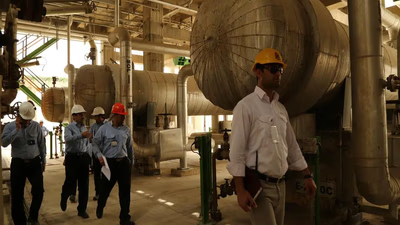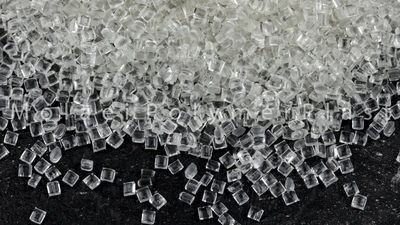
Polybutadiene rubber: key material in tire manufacturing.
Polybutadiene rubber, commonly known as PBR, is a synthetic rubber that belongs to the class of elastomers. It is formed through the polymerization of butadiene, a monomer derived from petroleum. Polybutadiene rubber possesses unique properties that make it valuable in various applications. PBR is characterized by its high resilience, excellent abrasion resistance, and low glass transition temperature. It has a high degree of elasticity, allowing it to recover its original shape after being stretched or deformed. This makes it ideal for use in products that require flexibility and impact resistance.
The PBR rubber polybutadiene compound is a synthetic rubber. Polybutadiene rubber is a polymeric compound that is formed from the polymerization reaction of units 1 and 3 of butadiene. PBR is the fourth most widely used chemical in the world in 2012. PBR materials are widely used in the rubber industry and in the plastics industry. These materials are used in the tire industry to make car tires, and it is interesting to know that more than 70% of polybutadiene materials are used in this field. Polybutadiene has a high resistance to tearing and therefore has a wide range of applications in the rubber industry.
Polybutadiene rubber consists of a polymer chain made up of repeating units of butadiene. Butadiene is a monomer that contains four carbon atoms and two double bonds. The arrangement of these repeating units along the polymer chain gives polybutadiene rubber its unique properties. There are two main types of polybutadiene rubber: high cis and high trans. High cis polybutadiene rubber has a high percentage of cis double bonds in its polymer chain, which enhances its elasticity and resilience. High trans polybutadiene rubber, on the other hand, has a high percentage of trans double bonds, which makes it stiffer and less elastic.
The properties of polybutadiene rubber can be modified by incorporating various additives. For instance, fillers like carbon black are commonly added to improve the mechanical properties and reduce costs. Other additives can be used to enhance oil resistance, heat resistance, flame retardancy, or to provide specific functionalities. 25% of it is used in plastic industry. In this area, PBR materials are added to plastics to enhance the mechanical properties of plastics. It is also used as a rubber pad between bricks and railroad tracks. Process quality is more important than the use of plastic materials than their use in tires. This is especially important when it comes to tire color and odor stability. That is why the standards of the rubber industry cover all these factors. Features and properties of polybutadiene:
- The rubber is solid, light yellow, insoluble in water and odorless.
- Melts at high temperatures. It should not be exposed to oxidants.
- The storage temperature of these materials should not be higher than 30 ° C and it can also be stored for one year.
- If decomposed by heat, carbon dioxide and oxygen will be produced, which reduces the oxygen in the air.
- These PBR materials are produced and supplied by petrochemicals in packages with different weights.
Polybutadiene rubber is typically produced through the process of polymerization. Butadiene monomers are polymerized using various catalysts, such as neodymium-based or cobalt-based catalysts. The polymerization can be carried out using solution polymerization, emulsion polymerization, or bulk polymerization methods. Polybutadiene rubber exhibits several key properties that make it valuable in different applications. These include high tensile strength, excellent abrasion resistance, low hysteresis (energy loss during deformation), good resilience, low glass transition temperature, and high resistance to wear and tear. It also has good electrical insulation properties.
Polybutadiene rubber is commonly used in the manufacturing of tires, where it is blended with other rubbers such as natural rubber or styrene-butadiene rubber (SBR). The addition of PBR improves the tire's rolling resistance, wet grip, and overall durability. It enhances the tire's ability to grip the road, providing better traction and reducing wear. In addition to tires, polybutadiene rubber finds applications in various industrial products, such as conveyor belts, hoses, gaskets, seals, and vibration dampers. It is also used in the production of footwear, sporting goods, and adhesives.
The properties of polybutadiene rubber can be modified by adjusting its molecular structure and incorporating additives. This allows manufacturers to tailor the material to meet specific requirements, such as increased oil resistance, improved tensile strength, or enhanced heat resistance. Overall, polybutadiene rubber is a versatile synthetic rubber with valuable properties that contribute to its widespread use in a range of industrial and consumer applications.
Polybutadiene rubber is often blended with other rubbers to achieve specific performance characteristics. For example, blending polybutadiene rubber with natural rubber improves its resilience and wear resistance, while blending it with styrene-butadiene rubber (SBR) enhances its processing properties and durability. Polybutadiene rubber finds extensive use in the automotive industry, particularly in tire manufacturing. It is used in tire treads, sidewalls, and inner liners to improve traction, rolling resistance, and overall tire performance. Apart from tires, polybutadiene rubber is utilized in a wide range of industrial products, including belts, hoses, seals, gaskets, shoe soles, adhesives, and coatings.
-

The Middle East is a key player in the global polybutadiene (PBR) market, leveraging its abundant petroleum and natural gas resources. The region has developed extensive petrochemical complexes that produce a variety of chemicals and polymers, including PBR. The availability of butadiene, a crucial raw material for PBR production, is ensured by the region"s rich petroleum reserves. This proximity to feedstock sources reduces transportation costs and enhances competitiveness in both regional and global markets. Countries like Saudi Arabia, UAE, and Qatar have established polymerization plants that contribute significantly to the production capacity of PBR. Investments in research and development are ongoing to improve product quality and meet industry demands. Polybutadiene is favored for its water resistance, abrasion resistance, and flexibility at low temperatures, making it suitable for various applications such as tires and seals. However, it has limitations including low heat resistance and unfavorable processability.
The Middle East also focuses on expanding its downstream industries to add value to its petrochemical offerings by processing PBR into finished rubber products. With strategic access to major shipping routes, the region efficiently exports PBR to markets in Asia, Europe, and Africa while also catering to domestic demand driven by growing automotive and construction sectors. "
-

Comprehensive knowledge of polybutadiene rubber (PBR) producers in West Asia is essential for traders to conduct effective market analysis. Understanding supply-demand dynamics, production capacities, and the competitive landscape allows traders to make informed decisions regarding pricing and sourcing. Key producers such as Sadara, Petro Rabigh, Borouge, and Qatar Petrochemical Company play significant roles in the region"s PBR market. With Sadara"s capacity at 150,000 metric tons per year and Petro Rabigh at 130,000 metric tons, these companies are crucial for meeting both domestic needs and export demands. The insights gained from knowing these producers enable traders to optimize their supply chains by identifying reliable suppliers and assessing production capabilities. Additionally, this knowledge opens up opportunities for market expansion by identifying emerging producers and new capacities. The recent establishment of a large butadiene unit is expected to generate significant revenue through exports to countries like Japan and China. Traders can leverage detailed information about PBR producers to stay updated on market trends, negotiate better contracts, and develop risk mitigation strategies against potential supply chain disruptions.
-

Polybutadiene rubber (PBR) is a synthetic polymer formed from butadiene monomers, characterized by its light yellow color and solid state. Its properties vary based on the configuration of double bonds during polymerization, influencing its applications in various industries. Safety considerations are crucial when handling PBR, as it can pose health risks if not managed properly. The material is stable under normal conditions but can catch fire at high temperatures (332 °C) and should be stored away from oxidizing agents. It is insoluble in water but soluble in organic solvents like hexane and toluene. Proper personal protective equipment (PPE) is recommended to prevent skin irritation and respiratory issues from inhaling rubber dust or fumes. Storage guidelines dictate that PBR should be kept in a cool, dry place, ideally below 30 °C, and away from heat sources. Packages must be transported according to shipping standards, ensuring they are placed on wooden pallets and stored in polyethylene containers. Disposal of PBR waste must comply with local regulations to prevent environmental contamination.
-

Polybutadiene rubber (PBR) is known for its high elasticity, resilience, and excellent abrasion resistance, making it ideal for various applications. It is extensively used in tire manufacturing, where it enhances performance by improving rolling resistance and traction. PBR"s durability and flexibility also make it suitable for conveyor belts, seals, gaskets, and vibration dampers in automotive and industrial settings. Its chemical resistance allows it to withstand exposure to oils and fluids, which is crucial for automotive components. Additionally, PBR is utilized in sporting goods like golf balls and tennis balls due to its resilience. The material"s low glass transition temperature ensures flexibility even in cold environments. PBR can be blended with other rubbers to tailor its properties for specific applications, enhancing its versatility across industries.
-

Polybutadiene rubber (PBR) is a synthetic elastomer derived from the polymerization of butadiene, a petroleum-based monomer. It is known for its high resilience, excellent abrasion resistance, and low glass transition temperature, making it suitable for various applications. PBR is predominantly used in the tire industry, accounting for over 70% of its consumption, where it enhances traction and durability. There are two main types of PBR: high cis and high trans, each offering different properties such as elasticity and stiffness. The material can be modified with additives to improve characteristics like oil resistance and heat stability. In addition to tires, PBR is utilized in industrial products such as conveyor belts, hoses, seals, and adhesives. Its versatility allows manufacturers to tailor its properties for specific applications by adjusting molecular structure or incorporating fillers like carbon black. The production process involves polymerization using catalysts and can be executed through various methods including solution or emulsion polymerization.
Overall, polybutadiene rubber"s unique properties contribute significantly to its widespread use across multiple industries. "





